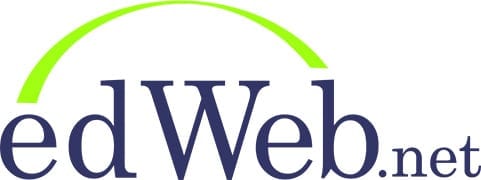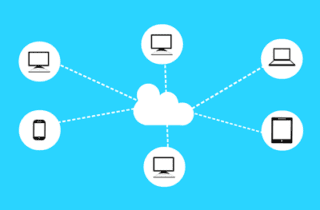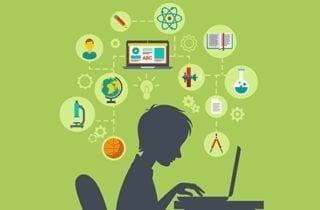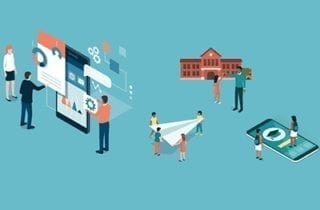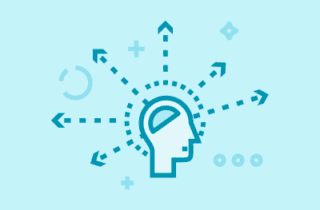At the beginning of the edtech wave, superintendents saw many benefits from using digital resources in the classroom. But, they also saw a large number of resources being recommitted to just this one aspect of education: space for server farms, money for hardware and software upgrades, overworked personnel, etc. District IT offices were taking on the same tasks as Fortune 500 companies without the ability to implement them as effectively. For administrators looking to take the focus of edtech away from upkeep and back to learning, moving to the cloud could be the answer. Presenters of the edWebinar, “Cloud Computing: Taking Advantage of the Latest Technologies,” which is part of the Empowered Superintendents edWebinar series, shared their reasons for switching to the cloud, how it has helped their schools, and their advice when making the transition.
When the administrators at Vestavia Hills High School (AL) were tasked with creating a leadership program, they knew one thing right away. They did not want to develop another program that tapped only the top students and did nothing to engage the rest of the student body. The resulting Youth Leadership program has not only had a positive impact on the school’s culture, but also provided the school’s administrators with several important lessons. In their edWebinar, “Build a Positive School Culture with a Student-Run App,” Kym Prewitt, Leadership Teacher at Vestavia Hills High School, and Whit McGhee, Director of Public Relations at Vestavia Hills City Schools, shared what they learned and how the kids continue to surprise them.
edWeb.net, an award-winning professional learning network, today joined forces with Pearson on its professional learning community, Assessment for Learning. Hosted on edWeb, the site will provide an online forum where educators can learn from top experts to improve assessment practices, explore new tools, and personalize teaching for every child.
Education research is meant to improve teaching and learning. Since the actual ideas for research are often driven by the interests of the funding sources, though, there’s a potential disconnect between what research schools need versus what they’re getting. When presenting Digital Promise’s new Challenge Map, which explores issues, ideas, and resources for K-12 challenges, Babe Liberman, M.Ed., Research Project Manager for Digital Promise, said the current pipeline means schools are passively waiting for the right research and opportunities to come their way. In the edWebinar “Shaping the Future of Education Research: Digital Promise’s Challenge Map,” Liberman explained the purpose of the Map, how it was created, and how schools can develop their own.
edWeb.net is excited to announce that VIPKid will be sponsoring Helping ELL/ESL Students Succeed, a professional learning community on edWeb that focuses on supporting ELL/ESL students to improve their academic achievement and English language learning.
“Every individual should be able to access things that they like,” said Monica Fisher, M.Ed., BCBA/COBA, Director of the Behavior Department at Monarch Center for Autism during an edWebinar. “It is our right to engage in preferred activities, spend time with family, and connect with the community. If there are behaviors that you are seeing in your students with disabilities and challenging behaviors that are limiting these rights, then it is something we need to fix as it can have a long-term impact on their quality of life.” Applied Behavior Analysis (ABA), a technological and professional systematic approach, is designed to analyze and change behavior by identifying a behavioral problem, gathering relevant data, and formulating/testing a hypothesis. Fisher said that while ABA is a useful tool for looking at and changing the challenging behaviors of students with autism, it can apply to different parts of everyone’s lives. “ABA is how we have all learned and how our lives are shaped by behavior.”
Teaching to the middle—most teachers don’t want to do it. But when faced with a large class of learners with diverse proficiency, the middle is where many teachers find themselves. Knowing that he wasn’t challenging one-third of his class and teaching over the head of another, Peter Briggs, a music teacher at Lincoln High School (WA), wanted to find a way to manage and support growth for all skill levels. As he explained in the edWebinar, “Developing a Growth Mindset Using Digital Portfolios,” combining a change in his educational approach with the addition of differentiated assignments helped all students raise their performance.
“While we (teachers) are not always comfortable with technology, we need to think about students first and work through our challenges to make things better for them,” said Sharon Plante, Director of Technology for the Southport School, Southport, CT, during a recent edWebinar. She emphasizes that meeting the needs of students with learning disabilities through the use of technology “can make reading instruction a multi-sensory process that is engaging and explicit while maintaining the individualization and diagnostic-prescriptive aspects of the lesson.”
Zero tolerance policies, while trying to keep kids accountable for their actions, often result in suspensions for even minor infractions like dress code violations or being tardy. While these behaviors warrant attention, Fatima Rogers, Principal of Charles W. Henry School, School District of Philadelphia, and Jody Greenblatt, Esq., Deputy of School Climate and Safety, School District of Philadelphia, questioned what their conduct code and other discipline methods actually did to help students. Working with the Committee for Children, they’re piloting a program merging social emotional learning (SEL) and Restorative Practice (RP) in school. Their goal, as explained in the edWebinar, “SEL and Restorative Practices: Schoolwide Integration Strategies,” is to not only give students the emotional toolkit they need but to also provide a behavioral framework that focuses on support over punishment.
In a recent edWebinar, Julie Alspach, Program Administrator, Virtual Learning Academy Consortium (VLAC), and David E. Kanter, Ph.D., Chief Academic Officer, Calvert Education, shined a light on a shift in education. Kanter said that “the goals of education have shifted to create the independent thinkers and creative problem solvers that our world needs, both now and for the future.”

